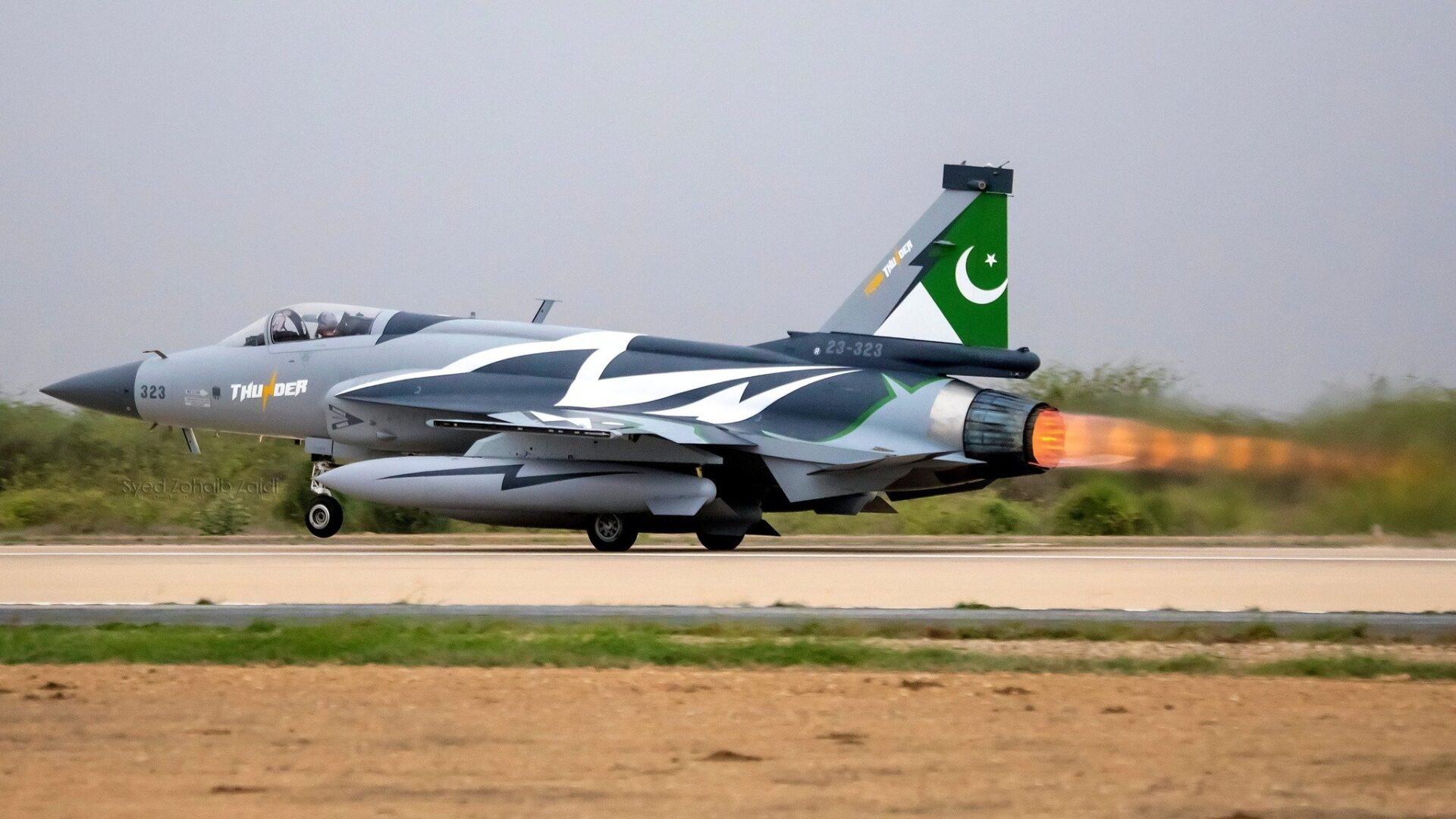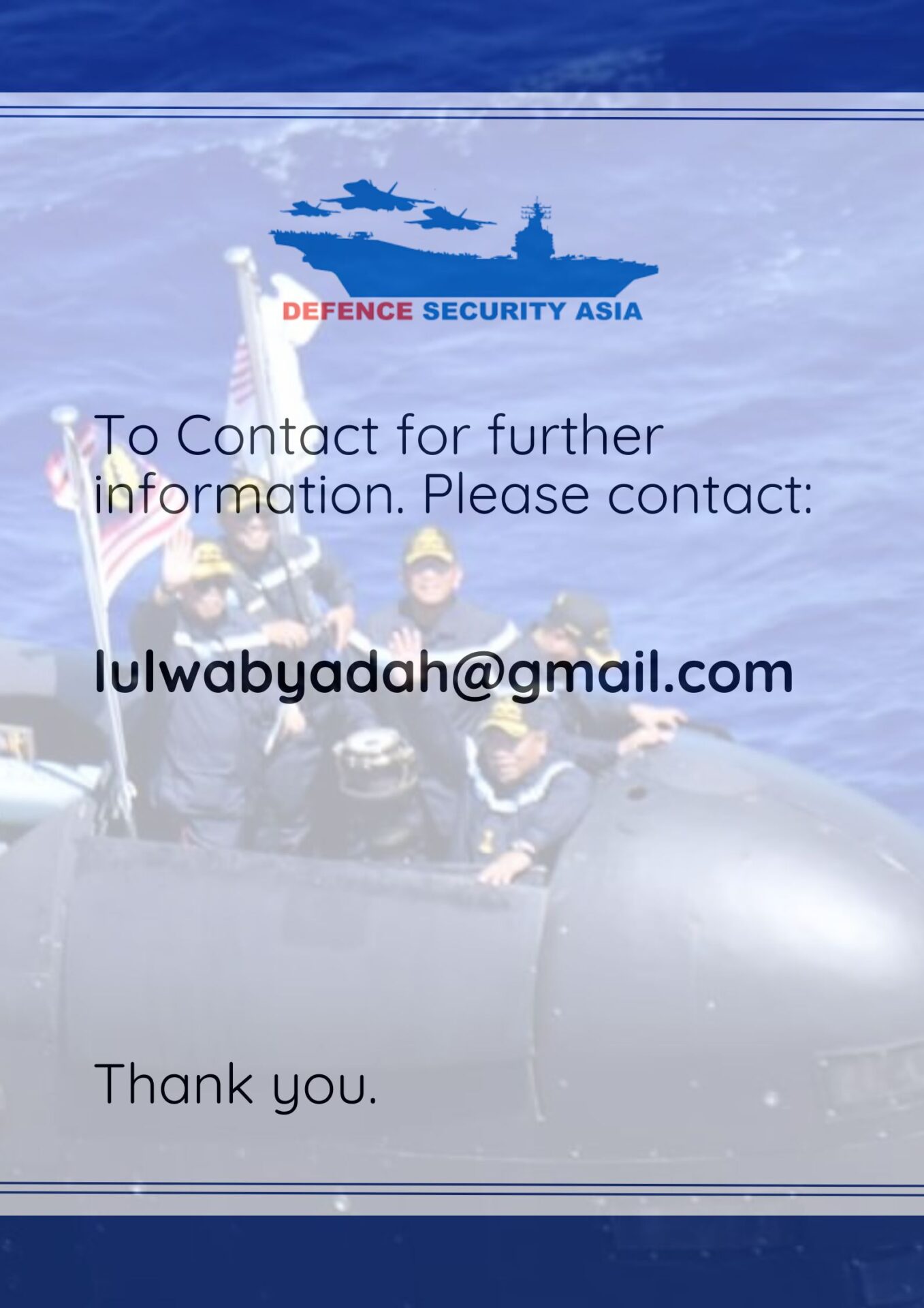PAF’s JF-17 Block III Debuts in UK: Combat-Proven Fighter Arrives at RIAT 2025
Landing at RAF Fairford alongside a C-130 Hercules transport aircraft, the Pakistan Air Force (PAF) contingent is set to join more than 60 other air arms from around the world for RIAT, now celebrating its 50th anniversary as one of the world’s largest and most prestigious military airshows.
As global interest surges in lightweight, cost-effective 4.5-generation fighter jets, Pakistan has dispatched its most advanced multirole aircraft—the JF-17 Thunder Block III—to the United Kingdom for the Royal International Air Tattoo (RIAT) 2025, marking a significant milestone for the country’s aerospace diplomacy and combat aviation ambitions.
Landing at RAF Fairford alongside a C-130 Hercules transport aircraft, the Pakistan Air Force (PAF) contingent is set to join more than 60 other air arms from around the world for RIAT, now celebrating its 50th anniversary as one of the world’s largest and most prestigious military airshows.
Held from 18 to 20 July, the three-day event supports the Royal Air Force Charitable Trust and serves as a platform for global aerospace industries and air forces to showcase cutting-edge technologies, operational capabilities, and military partnerships.
According to a statement from Inter-Services Public Relations (ISPR), “Pakistan Air Force’s participation in RIAT, one of the largest and most respected airshows in the world, underscores the service’s commitment to showcasing its professionalism, operational capabilities, and growing aerospace industrial base.”
This year, however, Pakistan’s appearance carries far more than symbolic significance.
For the first time, the JF-17 Thunder Block III is being publicly presented in the West following its combat deployment earlier this year during a high-stakes aerial clash with the Indian Air Force (IAF).
In May 2025, Pakistani fighter pilots successfully downed five Indian fighter jets in retaliation for nocturnal airstrikes near the disputed border—an event widely described as the most intense air-to-air engagement in South Asia in over 50 years.

A month later, the PAF officially confirmed that the operation was led by the 15th Squadron based at PAF Base Minhas in Kamra, home to the Pakistan Aeronautical Complex (PAC) and the nation’s fighter jet manufacturing program.
“There’s a palpable sense of enthusiasm across the United Kingdom following the recent Pakistan-India conflict, as aviation enthusiasts and defence observers were eagerly looking forward to the arrival of the Pakistan Air Force’s JF-17 Thunder Block III,” the statement noted.
“The aircraft’s combat-proven capabilities and operational excellence have garnered significant global attention, making its appearance at RIAT a highly anticipated highlight in the aerospace and defence community.”
In a further demonstration of PAF’s growing expeditionary confidence, the JF-17 Block III successfully executed mid-air refuelling during its transcontinental deployment to the UK, supported by an IL-78 aerial tanker.
“The successful mid-air refuelling mission highlights the Pakistan Air Force’s capability to project airpower beyond national borders, as well as the exceptional coordination between its air and ground crews during complex long-range deployments,” ISPR added.
This operational feat underscores a key evolution in the PAF’s doctrine—transitioning from a reactive national air defence force to a regionally deployable power capable of sustained overseas missions.

The JF-17 Thunder Block III represents the most sophisticated iteration in the Thunder series, co-developed by Pakistan and China to rival modern fourth- and 4.5-generation fighters like India’s HAL Tejas Mk1A, Sweden’s Gripen C/D, and even legacy platforms like the F-16 Fighting Falcon.
The Block III variant incorporates a suite of advanced combat features previously absent from the baseline platform, including a KLJ-7A AESA radar, helmet-mounted targeting system (HMD), digital fly-by-wire controls, and a fully glass cockpit with three multi-function displays (MFDs).
With a maximum takeoff weight (MTOW) of over 12,700 kg, the JF-17 Block III boasts a top speed of Mach 1.6 (1,975 km/h) and a service ceiling of 55,000 feet, enabling it to operate effectively across a broad range of tactical and strategic roles.
Crucially, it integrates the PL-15 Beyond Visual Range (BVR) air-to-air missile, a game-changing weapon with an estimated range of over 200 km, giving Pakistani pilots the ability to engage adversaries well before crossing radar horizons.
Armed with seven hardpoints, the aircraft is capable of delivering a broad payload mix including PL-10E IR-guided dogfight missiles, laser-guided bombs, anti-ship missiles such as CM-400AKG, and even nuclear-capable air-launched cruise missiles (ALCMs) in its strategic deterrence role.
The JF-17 Block III also features Radar Warning Receivers (RWR), Missile Approach Warning Systems (MAWS), and Infrared Search and Track (IRST) sensors—enhancing its survivability in contested airspaces dense with electronic warfare and radar threats.
PAC Kamra, located in Punjab province, is not only the production center for the Thunder family but also the hub of Pakistan’s growing indigenous aerospace industry, capable of serial production, repair, overhaul, and flight certification.

The PAF currently operates multiple squadrons of JF-17s, including No. 15 and No. 16 Squadrons, with Block III aircraft being assigned to elite units responsible for front-line missions and deep strike operations.
The aircraft’s operational debut at RIAT 2025 serves dual purposes—enhancing Pakistan’s international prestige and marketing the JF-17 Block III to potential buyers across the Middle East, Africa, and Central Asia.
With an estimated unit cost of USD 30–35 million (RM140 million to RM165 million), the JF-17 offers a highly competitive alternative to more expensive Western counterparts, positioning it as an attractive solution for nations seeking multirole capability at a fraction of the price.
By comparison, the F-16V sells for upwards of USD 70 million (RM330 million) per unit, while the French Dassault Rafale costs in excess of USD 100 million (RM470 million)—both significantly beyond the defence budgets of most developing countries.
Reports suggest that nations including Azerbaijan, Iraq, Nigeria, and Myanmar are evaluating the JF-17 Block III, while potential Latin American interest is quietly emerging from countries seeking to modernize aging inventories.
Strategically, the JF-17 Block III gives Islamabad a homegrown platform that enhances deterrence against India while deepening its defence-industrial partnership with Beijing.
As the South Asian security environment remains volatile—particularly following the May 2025 air engagement—the operational relevance of aircraft like the JF-17 has become more pronounced.
At RIAT 2025, the JF-17’s debut will not only reflect Pakistan’s aerospace evolution but will also spotlight its growing aspirations to be a credible arms exporter and regional airpower.


